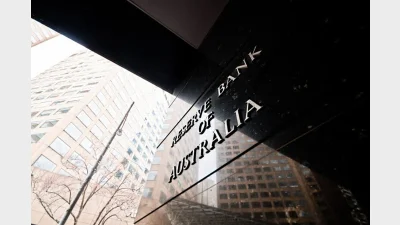(August-2004) Sustainable performance: Can equities provide a vehicle for growth?
The strong performance of Australian equities over the past year is a key factor behind the better than expected superannuation returns. Research house SuperRatings estimates that Australian equities account for around 34 per cent of the assets in balanced funds. This is compared to 24 per cent in international equities, 22 per cent in fixed interest and 10 per cent in property (6 per cent directly and 4 per cent in listed property groups).
After two years of negative returns, SuperRatings believes balanced funds returned 12.6 per cent over the year to end-June. It’s three-year rolling return to end-June was just under 3 per cent while the five-year return was near 5 per cent. This means, says SuperRatings managing director Jeff Bresnahan “that many funds are still short of reaching their long-term objectives which is to beat the consumer price index by 3.5 percentage points”.
InTech calculates that investors with growth-oriented investments are now looking at a three-year median return of 2.7 per cent per year that is around inflation. Over seven years, there is a more relevant horizon for assessing a growth-oriented strategy, with median returns at 6.3 per cent per year being an annual 3.6 per cent ahead of inflation.
Both the Mercer Investment and the InTech surveys of wholesale funds found the median fund returning 14.1 per cent in balanced and growth superannuation funds over the 2004 financial year respectively. Mercer finds the top-performing balanced fund to be the BT Active Balanced fund (19.2 per cent). The worst was Zurich’s managed growth fund (12 per cent).
InTech’s top-performing growth fund is Invesco (19.3 per cent). The poorest performer is again Zurich (12 per cent).
For its part, SuperRatings lists the Motor Trades Association of Australia’s balanced fund as being the top balanced option (returning 16 per cent).
Were it not for the 21.7 per cent gross return on Australian equities (19 per cent net of fees and taxes) over the year to end-June, balanced funds would not have realised double-digit growth. The benchmark ASX 200 index rose 16 per cent over this period so the balanced funds do appear to have added value even after adjusting for fees and taxes.
InTech research finds that “active Australian share managers have consistently delivered value added relative to index over the past decade”. But more recently, “the magnitude of the value added has shown a declining trend”.
Analysis presented in InTech’s InSight suggests that privately-owned managers with relatively low funds under management (FUM) and who are prepared to back their judgment have generally been unaffected by this trend and have continued to add significant value.
The industry superannuation funds movement is going to great lengths to highlight the difference between the performance of individual superannuation funds and those of pooled superannuation trusts. Industry funds fill eight of the top 10 places in SuperRatings’ Balanced Index Forecast.
Behind the solid performance of Australian equities, Mercer highlights strong returns from the energy and materials sectors.
Looking at the value versus growth style debate, Morningstar head of consulting Anthony Serhan notes there is no clear edge. “We find those in the middle did best.” He finds that “style has been secondary to the size effect — the clear winners have been those exposed to small and mid cap stocks”.
Neither Mercer, SuperRatings nor InTech expect these results to be matched this year and note that they come off the back of a couple of poor years.
For his part, Serhan sees a “flat outlook after a strong run. We are at an inflection point where we are coming out of a bear market, but faced with uncertainty ahead.”
Merrill Lynch’s survey of global fund managers for July finds fund managers increasingly concerned by the weakness of the global economy and doubtful of corporate profit growth.
For its part Morningstar suggests the outlook for business activity in Australia has softened markedly. It cites an unexpectedly weak economy in the March quarter (gross domestic product up only 0.2 per cent), a 1.4 per cent decline in corporate profits in the quarter and job losses. “More realistically, though, these numbers are likely to have been a temporary pause after previously vigorous growth.”
It notes that The Economist magazine’s consensus poll in June has growth this year at 3.8 per cent and next year at 3.1 per cent. “Sharemarket analysts believe that ongoing growth in the economy at these rates will translate into earnings per share growth for industrial stocks of some 12 per cent both this year and next, which should result in further gains for the local market.”
Expectations for resources stocks are considerably higher at 35-40 per cent earnings growth this year and 25-30 per cent next. This is on the back of a weaker Aussie dollar and strong commodity prices.
Recommended for you
The major changes to the proposed $3 million super tax legislation have been welcomed across the superannuation industry.
In holding the cash rate steady in September, the RBA has judged that policy remains restrictive even as housing and credit growth gather pace.
A new report warns super funds must rethink retirement readiness as older Australians use super savings to pay off housing debt.
An Australian superannuation delegation will visit the UK this month to explore investment opportunities and support local economic growth, job creation, and long-term investment.









